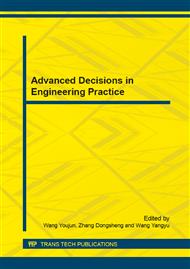[1]
CUI Yunxian. Development of Testing Temperature Cutter with NiCr/NiSi Thin Film Thermocouple for Transient Cutting[D]. Dalian University of Technology, (2011).
Google Scholar
[2]
CUI Yunxian, et al. Dynamic Calibration of the Cutting Temperature Sensor of NiCr/NiSi Thin-film Thermocouple[J]. Chinese Journal of Mechanical Engineering, Vol. 24, No. 1, 2011: 73-77.
DOI: 10.3901/cjme.2011.01.073
Google Scholar
[3]
CHOI H, LI X C. Fabrication and Application of Micro Thin Film Thermocouples for Transient Temperature Measurement in the Nanosecond Pulsed Laser Micromachining of Nickl[J]. Sensors and Actuators, 2007(136): 118-124.
DOI: 10.1016/j.sna.2007.01.007
Google Scholar
[4]
YE Fangwei. Development and Applications of the Thin Film Thermocouples[J]. Materials Review, 1995(5): 28-32.
Google Scholar
[5]
QU Xixin. Thin film Physics[M]. Beijing: Electronic Industry Press, 1994. (in Chinese).
Google Scholar
[6]
ZHENG Weitao. Thin Film Material and Thin Film Technology[M]. Beijing: Chemistry Industry Press, 2003 (in Chinese).
Google Scholar
[7]
Gualous H. Thin film thermal sensor fabrication and application. Part of the Conference on Device and Process Technologies for MEMS and Microelectronics. 1999: 386-390.
DOI: 10.1117/12.364488
Google Scholar
[8]
CUI Yunxian et al. Preparation and characterization of SiO2 multilayer composite insulating film for cutter temperature measurement sensor[J]. Journal of Function Materials, 2009, 40(11): 1850-1853.
Google Scholar
[9]
Shinozuka J, Basti A, Obikawa T. Development of cutting tool with built-in thin film thermocouples for measuring high temperature fields in metal cutting processes[J]. Journal of Manufacturing Science and Engineering, 2008, (130): 34501-34506.
DOI: 10.1115/1.2823066
Google Scholar
[10]
ZNEG Qiyong. Principle and Development of Thin film Thermocouple Sensor for Measuring Dynamic Cutting Temperature of Chemical Explosive Material[D]. Dalian University of Technology, (2005).
Google Scholar
[11]
Dirk Werschmoeller et al. Tool embedded thin film micro sensors for monitoring thermal phenomena at tool-work-piece interface during matching[J]. Journal of Manufacturing Science and Engineering, 2011, 133(2): 1007-1015.
DOI: 10.1115/1.4003616
Google Scholar
[12]
HUANG Zexi. Thermocouple Principle and Calibration[M]. Beijing: China measure Press, 1993. (in Chinese).
Google Scholar
[13]
KAASP, S.O. Principles of Electronic Materials and Devices[M]. Xi' an: Xi'an Jiaotong University, 2009. (in Chinese).
Google Scholar
[14]
Kanter.H. Slow-electron mean free paths in Aluminum, Sliver, and Gold[J]. The American Physical Society, 1970, 1(2): 522-536.
DOI: 10.1103/physrevb.1.522
Google Scholar
[15]
ZHANG Xugang et al. Design, fabrication and characterization of metal embedded thin film thermocouple with various film thickness and junction size[J]. Journal of Micro-mechanics and Micro engineering, 2006(16): 900-905.
DOI: 10.1088/0960-1317/16/5/004
Google Scholar
[16]
Korotcenkov G, Cho B K. Thin film SnO2-based gas sensors: Film thickness influence. Sensors and Actuators B:Chemical, 2009(142): 321-330.
DOI: 10.1016/j.snb.2009.08.006
Google Scholar
[17]
CUI Yunxian et al. Fabrication and Characterization of NiCr/NiSi Functional Thin Films on Temperature Measurement of Cutter Sensor[J]. Key Engineering Materials, Vol. 431-432(2010): 535-538.
DOI: 10.4028/www.scientific.net/kem.431-432.535
Google Scholar
[18]
Cattani M etal. Thermoelectric power in very thin film thermocouples: Quantum size effects[J]. Journal of Applied Physics, 2006(100): 114905-114909.
DOI: 10.1063/1.2388046
Google Scholar
[19]
Fenlei J, Will H.A. Thin-film thermocouples and strain-gauge technologies for engine applications[J]. Sensors and Actuators, 1998, 69(2): 187-193.
DOI: 10.1016/s0924-4247(97)01683-x
Google Scholar
[20]
YANG Deshun. Research on Transient Cutting Temperature Test Based on Multilayer Thin Film Thermocouple[D]. Dalian Jiaotong University, (2010).
Google Scholar


